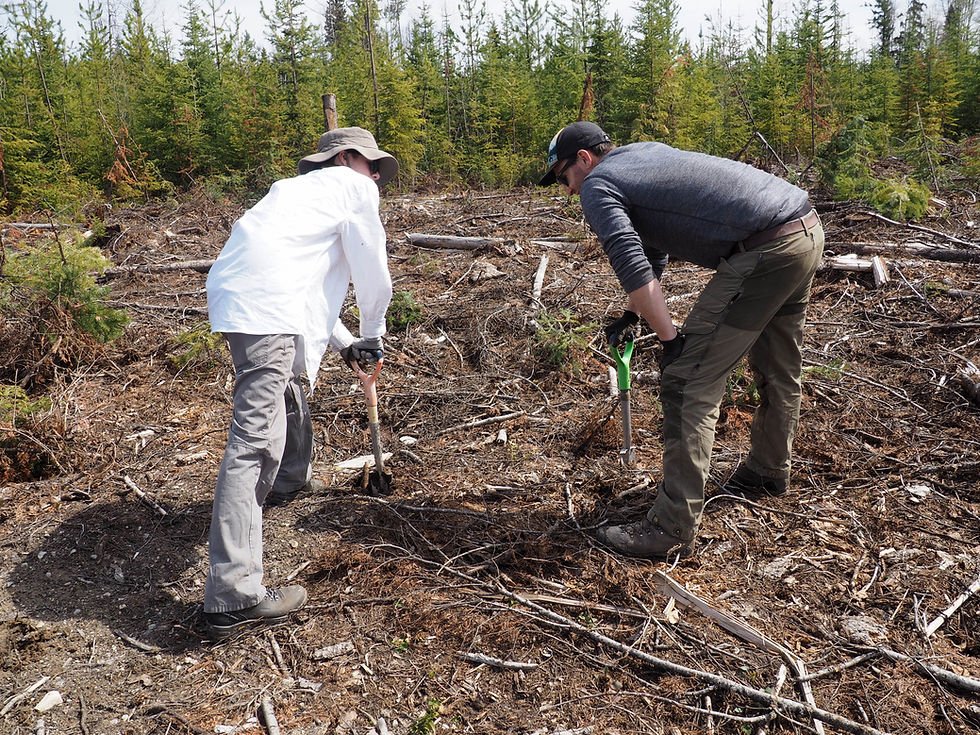- macforserv
- Jun 22, 2023
- 3 min read
Updated: Apr 1

The chance of workers having an interaction with a fire is very likely. The following are some basic safety considerations but do not replace the required training as detailed in the Wildfire Act and Regulations and WorkSafe BC Regulations.
1.
If you live, work and/or play in rural BC for any length of time you will have an interaction with a wildfire. Especially early in a wildfire incident, it is likely you will have to make some key decisions on your own.
2.
Don’t base your wildfire prevention, preparedness and response actions on past experience. Some contractors have worked for thirty years and not had a fire. Others have had two or three in short periods of time. Conditions have changed. More frequent extreme weather events, more variable and intense wildfire activity, increased fuel loads, increased human activity, increased road deactivation and increased activities on steep slopes all lead to an increase in wildfire risk to tree planters.

3.
Tree planters are forest workers and have legal obligations to report, reduce the chance of, prepare for and respond to wildfires. Proper training will help workers determine an appropriate response. Plan to get the required wildfire training in the future. Knowledge is power and will help you make appropriate decisions when you encounter a wildfire.
4.
Ensure your supervisor provides information on the current Fire Danger Rating for each worksite. This is available on the BC Wildfire Service app. Prevention and preparedness actions will vary based on the rating.
5.
Your supervisor should include wildfire response in their emergency drills and site orientations. Know where the fire extinguishers, hand tools and p-cans are located. Ensure they are in good working condition. Know what to do if a wildfire occurs on your block.

Mount tools and extinguishers on off-road vehicles.
Take fire tools with you into walk in/fly in blocks.
6.
Activities in the silviculture industry that may cause a wildfire are:
Burning
Smoking
ATV’s/UTV’s
Chainsaws
Vehicles
Only light campfires during periods of low fire risk. Ensure they are out and cold to the touch before leaving. No smoking on the block, only on mineral soil on roads. Ensure ATV’s and chainsaws are clean and have functioning spark arrestors in place. Don’t drive or park vehicles in tall grass or brush or on flammable material.
7.
Recognize conditions that elevate the fire risk.

Needles dry to a flammable condition in one warm day. They ignite easily and spread rapidly.
More fuel = a hotter and longer burn
8.
Follow your company emergency plan and supervisors’ instructions. If you are alone and you see a fire on your worksite immediately assess the direction the fire is spreading, how fast it is spreading and take action:
Warn adjacent workers
If the fire is spreading towards you get to the sides and downhill. Stay out of the smoke as much as possible.
Avoid going into the smoke or trying to outrun the fire
Report the fire to your supervisor and the BC Wildfire Service as soon as possible. Call *5555 or use the BC Wildfire App
9.
If there is any doubt about getting to a safe location in time, look for as big an opening as possible with areas of light fuel. Meadows, old landings, streams and wide parts of roads are survivable locations to ride the fire out as it passes over and around you.
10.
As the fire goes around and over you, protecting your airway is the primary concern. If you are in a vehicle stay in it as long as possible. Park on the side of the road or opening as far from the approaching fire as possible, keep the engine running, doors unlocked, blinkers on and AC on Arctic recirculate.
If the vehicle becomes too hot, exit and use it as a shield to ward off radiant heat. Get in the ditch or low spot on the lee side, scoop a shallow depression and put your lips as close to the ground as possible. There will be a layer of better air there.
Again, this is a partial list of key worksite wildfire safety considerations. It does not replace required training or experience and companies may have more detailed procedures in their emergency plan.
I hope you have a safe and successful season.
Feel free to contact me for any more information:
Doug MacLeod, MacLeod Forest Services
250-499-1075


